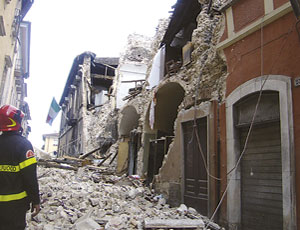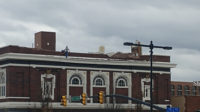Investigators from the U.K. studying the deadly April 6 earthquake near Rome found that traditional stone masonry buildings with even basic strengthening survived the temblor. The engineers are calling for simple reinforcement of older masonry buildings throughout Europe.

“We need more willingness...to spend a bit of money on reinforcing these traditional houses in Europe and the developing world,” says Tiziana Rossetto, who led 10 engineers and scientists from the U.K. Earthquake Engineering Field Investigation Team (EEFIT).
The EEFIT team spent six days surveying the devastated city and surroundings of L’Aquila, 10 kilometers from the epicenter. The 6.2-Mw moment-magnitude shock occurred 8 to 9 kilometers below ground, 95 km northeast of Rome.
Most of L’Aquila’s buildings are two to four stories and made of two skins: stone masonry infilled with rubble. Many have been strengthened with wall ties, steel lintel beams and other methods.
A third of the buildings in the city center showed damage to load-bearing walls, with many suffering internal collapses. Reinforced-concrete buildings, mostly erected after the introduction of seismic codes, “performed very well,” says Rossetto. While much cladding and many infill panels failed, “the structural elements weren’t affected at all,” adds the structural engineer-lecturer at University College, London.
Italy’s 70-year-old reinforced-concrete building code was updated as recently as 2003. The concept of response spectra was introduced in 1974. Codes require consideration of all seismic, gravity and live-load combinations, excluding wind.
Concrete buildings in and around L’Aquila are up to eight stories, typically with moment-resisting frames infilled with hollow clay brick or concrete blocks. Three major failures seen by EEFIT had all suffered ground-level soft-story failures. “Failure was precipitated by irregular stiffness in elevation. Poor detailing of reinforcement in connections was evident as well as lack of confinement in columns,” notes EEFIT’s preliminary report.
A university students’ residence, a five-floor apartment house and the Hotel Duca degli Abruzzi, built in the 1970s just after the seismic code’s introduction, all collapsed. Among weaknesses spotted by EEFIT was the inclusion of smooth rebar, which is no longer used, says Rossetto. Modern three-floor concrete buildings in nearby Paganica, with “good detailing,” were almost unscathed.



Post a comment to this article
Report Abusive Comment